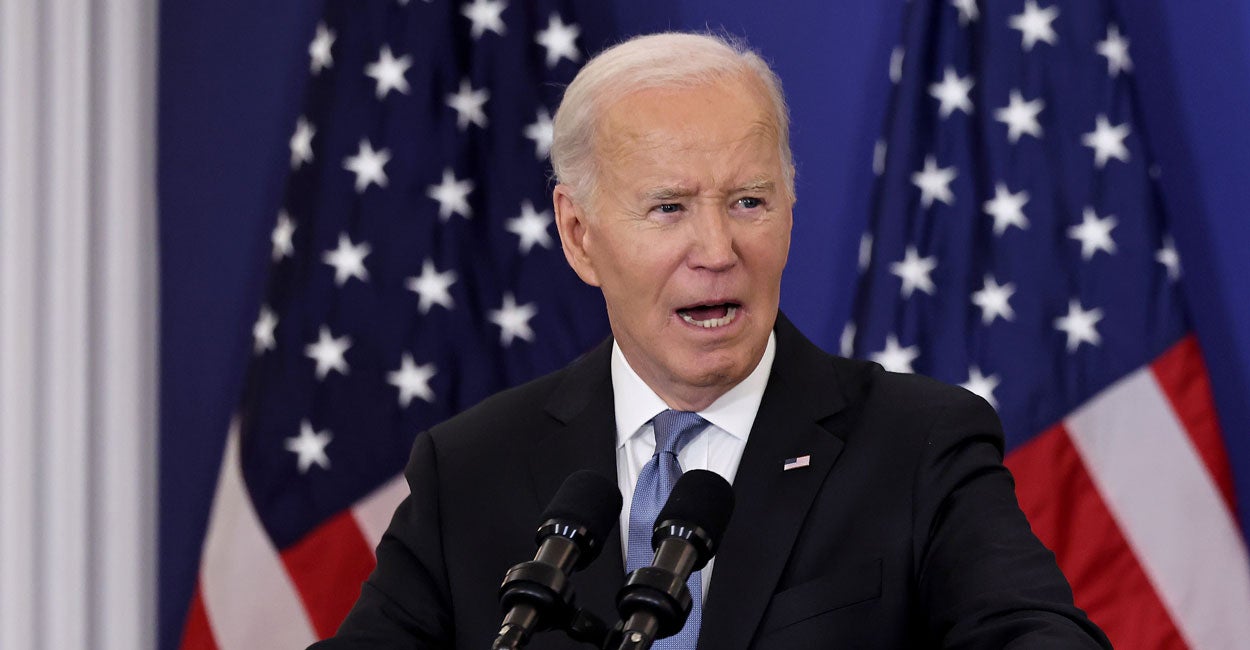Flying ‘unmolested’: WATCH Israel strike multiple Iranian military targets, Tehran claims minimal damage
Islamic Republic officials project 'business as usual,' regular Iranians fear war



JERUSALEM – Of the IAF attack on Iran only a few things are certain, Israeli aircraft spent more than an hour – largely unmolested over the skies of Iran – and all the planes made it back safely to their home bases. Until open sources become available it will not be clear the level of the damage, and perhaps the humiliation, which was meted out to the Islamic Republic.
This was an operation Israel undertook alone, and was thought to include between a third to a half of Israel’s entire air force. The Biden administration was informed of the attack, and U.S. planes were reportedly airborne at the time of the action, purely in a supervisory capacity.
Israel’s jets flew through both friendly and enemy air space, indeed air-defense batteries in both Iraq and Syria were taken out in the initial stages of the attack. There was thought to be a high level of intelligence cooperation between Israel and CENTCOM partners to the extent they were made aware of what was happening in real-time, although they were not part of the operation.
The reaction in Israel was somewhat muted, with people assuming the length of time the response to Iran’s ballistic missile attack on Oct. 1 was in the pipeline, might have produced greater fireworks – and more seemingly tangible results. However, a number of factors are at play and should be taken into consideration.
There are credible reports, which strongly suggest a strike at Iran’s nuclear facilities was not on the menu at this stage – and it was quickly ruled out as a possibility at an early cabinet meeting in the wake of the Iranian attack. Israel’s military and political leaders would have had to confront the probability of direct retaliation from Iran on a large scale if it had gone after these in the first instance. There is also the issue of the Biden administration and whether it would have sanctioned such an action, mere weeks – at the time – from the November presidential election.
Several elements are at play here and it is necessary to parse them to get a better understanding of what occurred in the Middle East over the last 48 hours or so.
It should be said upfront there are some schools of thought, which argue the Pentagon intel leak last week actually brought Israel’s response forward, rather than delay it. There is no sense yet whether the options set out in that document were changed or it was merely the timetable, which was expedient.
In this tit-for-tat game of strike and counter-strike, appearances and posturing play an enormously important role – both for the domestic audiences in the respective countries of Israel and Iran, but also the extent of the damage the governments of those countries will permit to be public through official channels. (There is a completely different and important issue of the use of open intelligence sources and how these are part of the informational arsenal, which is as much a part of this war as the actual missiles).
In its April attack on Israel, much of which was either repelled or fell within Iranian territory, the Islamic Republic took away a number of lessons – one of which directly impacted the nature of Israel’s strike on Friday night.
Tehran learned that too many of its vaunted drone armada and many of its cruise missiles either didn’t make it out of Iranian air space or they were too cumbersome and easy to spot for Israel’s defenses. So, in the Oct. 1 attack, Israel was largely assailed by ballistic missiles, where as many as three dozen or so impacted into Israeli territory – at least in close proximity to two of its northern air bases, as well as the headquarters of the Mossad, just a few miles from the central coastal city of Herzliya.
Israel’s missile defense array could not cope with all of these missiles – and it did not enjoy anything like the same level of coordination and cooperation as during the April strike, where very few projectiles made it through the defensive shield.
As a consequence of this, Israel specifically targeted a number of sites connected to Iran’s ballistic missile production and guidance. The strikes hit at least 12 planetary mixers used to make solid fuel used in long-range ballistic missiles, reports said, with some putting the number of mixers struck at 20.
“The Saudi Elaph news site reported, citing an unnamed informed source, that the heavy fuel mixers had been used to power Khaybar and Qassem missiles, ballistic missiles that were launched at Israel in the Iranian strike earlier this month,” according to the Times of Israel.
The factory, which was not given a precise location in the reporting, is thought to have been completely destroyed and will likely take some two years to become fully operational again.
As opposed to Israel’s very limited response to Iran’s April act of belligerence, which used a missile that Iranian air defense systems failed to identify and neutralize, and which targeted a radar system – including an S-300 surface-to-air defense system – buried deep in the country’s Isfahan Province. It was thought to be an elegant and understated response to Iran’s brute force and there was a sliver of hope it would demonstrate Israel possessed capabilities of which the Islamic Republic was both unaware and unable to repel. October’s ballistic missile attack gave the lie to that hope, and Israel was now determined to pull off an attack, from which it would be much more challenging for the regime in Tehran to save face.
The Khamenei regime can’t be transparent about what was actually hit, as that would pressure them to respond immediately.
Both Israel and the Khamenei regime know exactly what was hit.
What the world thought was a country properly protected by air defenses, was pounded for… pic.twitter.com/CTSlwgOZ7d
— Open Source Intel (@Osint613) October 27, 2024
This leads us to two further important pieces of information. Analysts from the United States and Israel assess the strike took out all of Iran’s remaining S-300 missile defense systems, which were protecting Tehran’s Imam Khomeini International Airport and at the Malad missile base near the capital.
Indeed, Israel’s attack has rendered Iran virtually defenseless against another aerial assault. The other by-product of taking out Iran’s air defenses was to cause a psychological blow to both the theocratic regime – which is reportedly “alarmed” at the destruction – but also because the IAF jets were able to fly unmolested over Iranian airspace for anywhere between one-to-three hours. Indeed, the attacks came in waves with Tehran impotent to do anything about them.
The main question on everyone’s mind is, “what’s next?” and that is spectacularly difficult to answer, given the sheer number of variables, which make this such a potentially combustible mix.
Will Iran go full steam ahead now and push for a nuclear weapons breakout? While there is nominally an Ayatollah Khamanei-issued fatwa against producing a nuclear weapon, the supreme leader who has now been in power for 35 years is ailing, and the project his predecessor Ayatollah Ruhollah Khomenei so assiduously planned decades ago is in danger of falling apart at the seams. Evidence of a push for a nuclear weapon could engender a smorgasbord of responses.
Even if President Donald Trump were to be reelected to the White House in November, it is conceivable outgoing President Joe Biden might order a strike against Iran’s nuclear infrastructure. There would surely be jeopardy involved in such a move. A president who has been wrong about foreign policy for most the entirety of his 50-year career, and whose domestic legacy lies in tatters – and whether Vice President Kamala Harris wins the election or not – will forever be known as the commander-in-chief against whom his own party plotted and executed a coup to defenestrate and replace him – might view a strike against Iran’s nuclear program as a potentially successful bookend to his presidency. It might also provide President Trump – if he were to win – a thorny issue of how to deal with fall-out.
If whichever U.S. administration decided not to go in this direction, Israel – following the so-called Begin doctrine – which basically outlines the Jewish state will not tolerate any Middle Eastern power possessing nuclear weapons could theoretically decide to “go it alone” against Iranian nuclear installations, especially now that the air defenses are so sparse. It would take significantly longer, however, to inflict the same kind of damage the U.S. Air Force would be able to achieve.
Will Iran return to the tried and tested formula of using ballistic missiles again to intimidate Jerusalem? Perhaps, but if the damage to its production and guidance is anything like reported, Tehran is going to have to manage its resources more carefully than in the past. At least Khamanei was talking a good game. In his first remarks after the attack, the Iranian leader said Israel had “made a mistake in attacking Iran,” and Iran’s power should be demonstrated to Israel, adding the way to do so should be “determined by the officials and that which is in the best interest of the people and the country should take place,” according to Israeli news outlet Ynet.
We must show the Zionists the power and initiative of the #Iranian people pic.twitter.com/26Y2bIc6uu
— Khamenei Media (@Khamenei_m) October 27, 2024
Is it now possible Iran will activate a coordinated effort from its proxies, the so-called “ring of fire” encircling Israel? However Iran decides to respond, it would appear this option is one of the likeliest, albeit with Hamas in Gaza no longer able to call on the men or materiel once at its disposal. Hezbollah, too, the jewel in the crown of Iran’s proxy groups – or more accurately the most geographically advanced outcrop of the Islamic Revolutionary Guard Corps – has suffered crippling, although as yet catastrophic blows, up to and including the elimination of its leader Hassan Nasrallah. The Houthi in Yemen, and Iranian-affiliated Islamist groups in Syria and Iraq remain potent foes, who possess projectiles, which they have shown can reach Israel and cause damage and destruction.
Will the Iranians do nothing? They will have to game out what their options are, knowing full well that a similar strike to the one in early October will merely invite a harsher response than the one just endured, which will likely not be nearly a month in the making.
Last night, Israel sent a powerful message to the world: it is a nation committed to peace and reason. Despite possessing the strength to escalate and even destroy Iran, Israel opted instead to expose Tehran’s vulnerability, remaining in Iranian airspace for an hour and reaching…
— Amjad Taha أمجد طه (@amjadt25) October 26, 2024
One of the other messages emanating from the region following Israel’s strike, is an intangible feeling of hope – even in Iran itself. It has taken 15 long years since then-President Obama and his administration betrayed Iran’s Green Revolution in 2009/10, which fought for increased democratic rights against the country’s theocratic rulers. Ordinary Iranians may have put their faith in America, only to have realpolitik crush their aspirations. Now, Israel, which has consistently said it has no quarrel with the Iranian people – is showing how to stand up to a regime much of the Middle East wants gone.
What's Your Reaction?

































































































